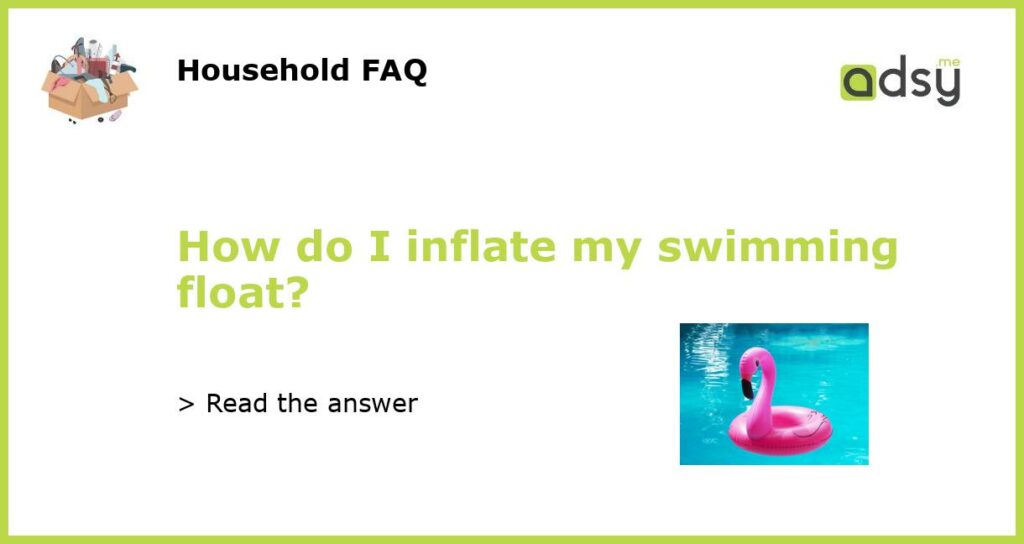Understanding the Basics of Inflating a Swimming Float
Before you start inflating your swimming float, it is crucial to understand the basics. Inflating a swimming float is a simple process that requires a few useful tools and techniques. The first and most essential item you need is an air pump. Air pumps come in different shapes and sizes, so you must choose one that suits your needs best.
Step-by-Step Guide on How to Inflate Your Swimming Float
Now that you have gathered all the necessary tools, it is time to learn how to inflate your swimming float.
Step One: Using a pump, connect the pump nozzle to the float’s valve opening. Ensure the nozzle fits snuggly into the valve to prevent air leaks when inflating.
Step Two: Begin the inflation process by pumping air into the float. Pump until the float is firm but not too hard. You can test the float’s firmness by pressing down on it to see if it feels solid or if it needs more air.
Step Three: Once the float is firm, remove the nozzle from the valve, and quickly replace the valve cap to prevent air from escaping. Confirm the cap is secure by twisting it firmly in place.
What are the Best Tips for Inflating Your Swimming Float?
While the inflating process is quite straightforward, there are a few tips that can help you achieve the best results.
Tip One: Inflate your float in a dry area to avoid moisture, which can cause the float to become moldy or degrade over time.
Tip Two: Use a pump that fits the valve opening, as it can lead to air leaks.
Tip Three: Avoid over-inflating your float, as it can cause it to burst or become stiff.
What are the Common Mistakes to Avoid When Inflating Your Swimming Float?
As simple as inflating a swimming float may seem, there are common mistakes people make that can interfere with the process or void the warranty.
Mistake One: Inflating the float in a wet area or leaving it to dry in the sun can cause it to degrade or become moldy. Always dry your float before inflating.
Mistake Two: Using an air pump that does not fit the valve opening can result in air leaking out or insufficiently inflating the float.
Mistake Three: Over-inflating your float can cause it to burst or be too stiff, defeating the purpose of having it in the first place. Always ensure the float is firm but not too hard.
How Do I Maintain My Inflated Swimming Float?
Now that you have inflated your swimming float, it is essential to know how to maintain it to increase its lifespan.
Maintenance One: Store your inflated float in a dry and cool place to prevent it from being exposed to the sun or moisture.
Maintenance Two: Use your float in a clean pool or beach to keep it clean. Always wash it after use and store it properly to avoid staining or discoloration.
Maintenance Three: Regularly check for leaks or tears and repair them as soon as possible to avoid further damage.






